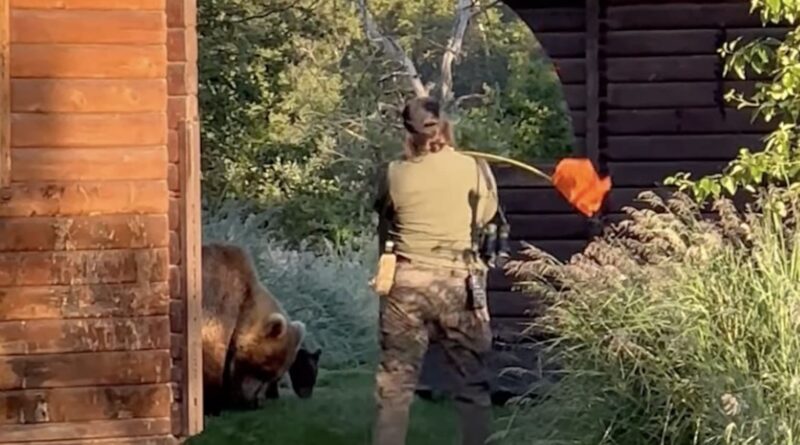Park Ranger Chases Flagged Grizzlies @ Katmai National Park
Brooks Camp in Alaska’s Katmai National Park attracts visitors from all over the world to enjoy world-class fishing and the unparalleled opportunity to view wild bears in their natural habitat. When you arrive at Brooks Camp, the bear safety area is mandatory for guests and includes guests at Brooks Lodge which has been providing accommodation since 1950.
Bears at Brooks Camp are often given access to visitors, and the National Park Service rangers who patrol the area are experts in keeping bears out of the buildings to avoid negative interactions with visitors. . Rangers carry bear spray but often strong verbal commands and kicking the dirt are enough to get them to leave.
This park ranger has developed a new way to communicate that roaming grizzlies are no longer welcome using a simple stick with a flag on the end. The combination of the movement and the noise produced by twisting the flagpole around proved to be enough to make this grizzly bear family leave the area.
Katmai park rangers are highly trained professionals when it comes to dealing with grizzly bears and their actions should not be viewed by the general public. They have years of experience and are familiar with individual bears and their tolerance for humans.
Katmai Bear Safety Instructions:
Travel and Travel in Groups
Groups of four or more are usually safer in bear country. Groups of people are often noisier and smellier than one person. Therefore, bears often take care of groups of people very far away, and because of their large numbers, groups of people are also threatened by bears. Hiking and traveling in groups is often the best way to increase your level of safety in bear country,
Be alert
Katmai bears are usually diurnal (active during the day) but are also nocturnal and can be found throughout Katmai. Never think that you are in a “bear free” area. Pay attention to bear signs and be especially careful in areas where bears may have trouble spotting you. Sometimes, you can see a bear before you realize it. In these cases, quietly go back the same way you came and give way to the bear.
Make some noise
In areas where visibility is low make noise to alert bears to your approach. Brown bears can react defensively when surprised. The human voice is the best tool for warning bears of your approach. Bears cannot associate with other people making noises, such as bells. Please remember that you are not making noise to scare the bears, but to alert them of your approach. Once a bear is aware of your presence there is usually no need to make more noise.
Do Not Approach Bears
You should always avoid interfering with the bear’s movements or foraging activities. If the bear reacts to your presence it is very close. Bears are familiar creatures and tend to use similar travel routes. Many close encounters can be avoided if you get out of the way of the bear before it gets close. Additionally, people are prohibited from approaching bears within 50 meters or staying within 50 yards of a bear using a mixed food source, including but not limited to but not limited to, animal carcasses, salmon and other feeding grounds.
Drive Clean Areas with Food that Attracts Bears
Salmon creeks, mud flats with clams, and sedge meadows are attractive places for bears and therefore people who want to watch them. Anglers are also attracted to streams where salmon are actively spawning.
Since many people visit Katmai to see bears or fish in rivers where bears may be encountered, it can be difficult to avoid areas with food that attracts bears. However, please consider fishing when the bears are not on the summit (like the Brooks River in June and August) and/or watching the bears from a distance, not, for example, from the middle of a sedge meadow. or salmon stream.
More From Unofficial Networks
#Park #Ranger #Chases #Flagged #Grizzlies #Katmai #National #Park
